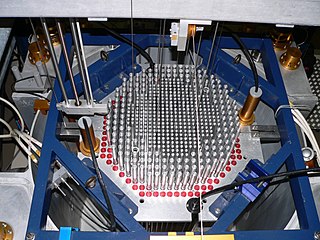 W
WA nuclear reactor, formerly known as an atomic pile, is a device used to initiate and control a fission nuclear chain reaction or nuclear fusion reactions. Nuclear reactors are used at nuclear power plants for electricity generation and in nuclear marine propulsion. Heat from nuclear fission is passed to a working fluid, which in turn runs through steam turbines. These either drive a ship's propellers or turn electrical generators' shafts. Nuclear generated steam in principle can be used for industrial process heat or for district heating. Some reactors are used to produce isotopes for medical and industrial use, or for production of weapons-grade plutonium. As of early 2019, the IAEA reports there are 454 nuclear power reactors and 226 nuclear research reactors in operation around the world.
 W
WA reactor pressure vessel (RPV) in a nuclear power plant is the pressure vessel containing the nuclear reactor coolant, core shroud, and the reactor core.
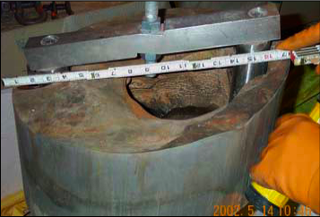 W
WThe United States Government Accountability Office reported more than 150 incidents from 2001 to 2006 of nuclear plants not performing within acceptable safety guidelines. According to a 2010 survey of energy accidents, there have been at least 56 accidents at nuclear reactors in the United States. The most serious of these was the Three Mile Island accident in 1979. Davis-Besse Nuclear Power Plant has been the source of two of the top five most dangerous nuclear incidents in the United States since 1979. Relatively few accidents have involved fatalities.
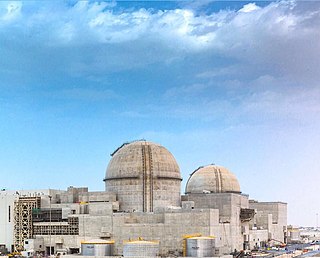 W
WThe APR-1400 is an advanced pressurized water nuclear reactor designed by the Korea Electric Power Corporation (KEPCO). Originally known as the Korean Next Generation Reactor (KNGR), this Generation III reactor was developed from the earlier OPR-1000 design and also incorporates features from the US Combustion Engineering (C-E) System 80+ design. Currently in South Korea there are two units in operation, and 4 units in construction. One unit is completed and in commercial operation in the United Arab Emirates at Barakah, with three more under construction at Barakah.
 W
WAqueous homogeneous reactors (AHR) are a type of nuclear reactor in which soluble nuclear salts are dissolved in water. The fuel is mixed with the coolant and the moderator, thus the name "homogeneous" The water can be either heavy water or ordinary (light) water, both of which need to be very pure.
 W
WCAREM is a small modular reactor for electrical power generation currently under construction near the city of Zárate, in the northern part of Buenos Aires province beside the Atucha I Nuclear Power Plant.
 W
WThe China Experimental Fast Reactor (CEFR) is China's first fast nuclear reactor, and is located outside Beijing at the China Institute of Atomic Energy. It aims to provide China with fast-reactor design, construction, and operational experience, and will be a key facility for testing and researching components and materials to be used in subsequent fast reactors. The reactor achieved first criticality on July 21, 2010 and started generating power a year later on July 21, 2011. On October 2012 Xinhua announced that the CEFR has passed official checks. The CEFR was brought to full power at 5.00pm on 15 December 2014 and operated at this level continuously for three full days.
 W
WA deep geological repository is a way of storing hazardous or radioactive waste within a stable geologic environment. It entails a combination of waste form, waste package, engineered seals and geology that is suited to provide a high level of long-term isolation and containment without future maintenance. This will prevent any radioactive dangers. A number of mercury, cyanide and arsenic waste repositories are operating worldwide including Canada and Germany and a number of radioactive waste storages are under construction with the Onkalo in Finland being the most advanced.
 W
WEtcheverry Hall is a building on the UC Berkeley campus that houses the departments of mechanical, industrial, and nuclear engineering of the UC Berkeley College of Engineering. Etcheverry Hall is named after Bernard A. Etcheverry, professor of irrigation and drainage from 1915–51, who later served as chair of the Department of Irrigation and Drainage from 1923–51. Built in 1964, it is located on the north side of Hearst Avenue, across the street from the main campus.
 W
WGen4 Energy, Inc was a privately held corporation formed to construct and sell several designs of relatively small nuclear reactors, which they claimed would be modular, inexpensive, inherently safe, and proliferation-resistant. According to news coverage, these reactors could be used for heat generation, production of electricity, and other purposes, including desalination.
 W
WThe Lady Godiva device was an unshielded, pulsed nuclear reactor originally situated at the Los Alamos National Laboratory (LANL), near Santa Fe, New Mexico. It was one of a number of criticality devices within Technical Area 18 (TA-18). Specifically, it was used to produce bursts of neutrons and gamma rays for irradiating test samples, and inspired development of Godiva-like reactors.
 W
WThe Halden Reactor is a 25MW nuclear reactor located in Halden, Norway and dedicated for research. The reactor became operative in 1958, and is operated by the Institute for Energy Technology (IFE). In October 2016 media said that it is expected to close now, without saying what year it will reopen. In June 2018, the board of directors of Norway's Institute for Energy Technology (IFE) has decided to close the Halden Reactor permanently and to start its decommissioning. The board will not apply to extend its operating licence, which expires in 2020, and the reactor, which is currently shut down due to a safety valve failure, will not be restarted.
 W
WDeep horizontal drillhole disposal is the concept of disposing of high-level radioactive waste from a nuclear reactor in deep horizontal boreholes instead of in more traditional deep geological repositories that are excavated like mines. The design concept is intended to improve upon the vertical borehole concept developed by Sandia National Laboratories, by utilizing modern advancements in directional drilling technology as well as using isotopic methods to measure the affinity a host rock has for isolation.
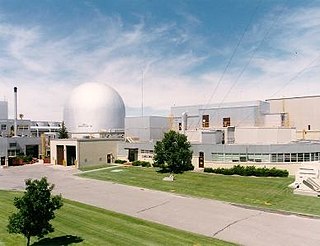 W
WThe integral fast reactor is a design for a nuclear reactor using fast neutrons and no neutron moderator. IFR would breed more fuel and is distinguished by a nuclear fuel cycle that uses reprocessing via electrorefining at the reactor site.
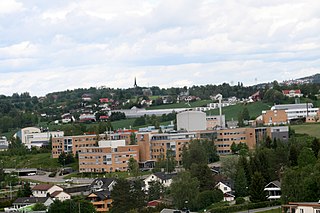 W
WKjeller is a village located near Lillestrøm in the municipality of Lillestrøm, Norway. It is located 25 kilometers north-east of Oslo.
 W
WThe Materials Testing Reactor (MTR) was an early nuclear reactor specifically designed to facilitate the conception and design of future reactors. It produced much of the foundational irradiation data that underlies the nuclear power industry. It operated in Idaho at the National Reactor Testing Station from 1952 to 1970.
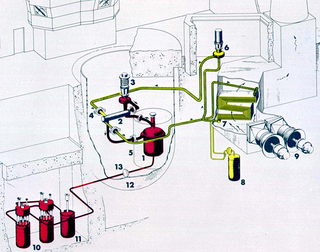 W
WThe Molten-Salt Reactor Experiment (MSRE) was an experimental molten salt reactor at the Oak Ridge National Laboratory (ORNL) researching this technology through the 1960s; constructed by 1964, it went critical in 1965 and was operated until 1969. The costs of a cleanup project were estimated at about $130 million.
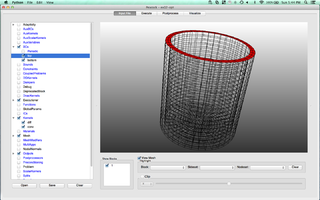 W
WMOOSE is an object-oriented C++ finite element framework for the development of tightly coupled multiphysics solvers from Idaho National Laboratory. MOOSE makes use of the PETSc non-linear solver package and libmesh to provide the finite element discretization.
 W
WThe MYRRHA is a "first of its kind" design project of a nuclear reactor coupled to a proton accelerator. MYRRHA will be a lead-bismuth cooled fast reactor with two possible configurations: sub-critical or critical.
 W
WA fossil natural nuclear fission reactor is a uranium deposit where self-sustaining nuclear chain reactions have occurred. This can be examined by analysis of isotope ratios. The conditions under which a natural nuclear reactor could exist had been predicted in 1956 by Paul Kazuo Kuroda. The phenomenon was discovered in 1972 in Oklo, Gabon by French physicist Francis Perrin under conditions very similar to what was predicted.
 W
WThe pebble-bed reactor (PBR) is a design for a graphite-moderated, gas-cooled nuclear reactor. It is a type of very-high-temperature reactor (VHTR), one of the six classes of nuclear reactors in the Generation IV initiative.
 W
WThe Nuclear Engine for Rocket Vehicle Application (NERVA) was a nuclear thermal rocket engine development program that ran for roughly two decades. Its principal objective was to "establish a technology base for nuclear rocket engine systems to be utilized in the design and development of propulsion systems for space mission application". NERVA was a joint effort of the Atomic Energy Commission (AEC) and the National Aeronautics and Space Administration (NASA), and was managed by the Space Nuclear Propulsion Office (SNPO) until the program ended in January 1973. SNPO was led by NASA's Harold Finger and AEC's Milton Klein.
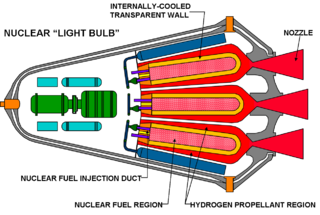 W
WA nuclear lightbulb is a hypothetical type of spacecraft engine using a gaseous fission reactor to achieve nuclear propulsion. Specifically it would be a type of gas core reactor rocket that uses a quartz wall to separate nuclear fuel from coolant/propellant. It would be operated at temperatures of up to 22,000°C where the vast majority of the electromagnetic emissions would be in the hard ultraviolet range. Fused silica is almost completely transparent to this light, so it would be used to contain the uranium hexafluoride and allow the light to heat reaction mass in a rocket or to generate electricity using a heat engine or photovoltaics. This type of reactor shows great promise in both of these roles.
 W
WNuScale Power is an American private company that designs and markets small modular reactors (SMRs). It is headquartered in Tigard, Oregon, United States. NuScale has been approved to build test reactors in Idaho, in 2029 and 2030.
 W
WObrigheim Nuclear Power Plant (KWO) is a mothballed nuclear power plant in Obrigheim, Neckar-Odenwald-Kreis, on the banks of the Neckar and owned by EnBW. It operated a pressurized water reactor unit from 1969 to 2005. It has been defuelled since 2007, with spent fuel rods awaiting transport to an interim storage facility. In March 2017, EnBW tested the shipment of numerous castors by a barge on the Neckar to Neckarwestheim Nuclear Power Plant.
 W
WOklo is a region near the town of Franceville, in the Haut-Ogooué province of the Central African country of Gabon. Several natural nuclear fission reactors were discovered in the uranium mines in the region in 1972.
 W
WOklo Mine, located in Oklo, Gabon on the west coast of Central Africa, is believed to be the only natural nuclear fission reactor. Oklo consists of 16 sites at which self-sustaining nuclear fission reactions are thought to have taken place approximately 1.7 billion years ago, and ran for hundreds of thousands of years. It is estimated to have averaged under 100 kW of thermal power during that time.
 W
WThe Omega West Reactor (OWR) was an experimental nuclear reactor located at Los Alamos National Laboratory in Los Alamos NM. OMR was completed in 1956 and primarily used for scientific scale nuclear research until it was fully decommissioned in 1994. It operated 24 hours a day, five days a week until 1972, when it went to eight hours a day, five days a week operation. The original purpose of the reactor was to collect nuclear material properties in support of the United States nuclear weapons program. Other uses included production of useful medical isotopes. The reactor was capable of producing an external beam of neutrons via beam tubes which extended through the reactor shielding. These were provided for external neutron beam experiments including: neutron radiography, neutron capture studies, gamma ray studies, neutron cross section measurements and neutron activation studies.
 W
WThe Oregon State University Radiation Center (OSURC) is a research facility that houses a nuclear reactor at Oregon State University (OSU) in Corvallis, Oregon, United States. The Oregon State TRIGA Reactor (OSTR) serves the research needs of the OSU nuclear engineering department along with other departments.
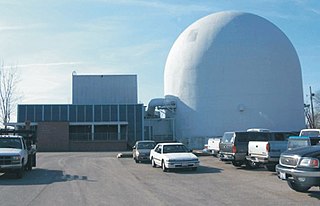 W
WAn organic nuclear reactor, or organic cooled reactor (OCR), is a type of nuclear reactor that uses some form of organic fluid, typically a hydrocarbon substance like polychlorinated biphenyl (PCB), for cooling and sometimes as a neutron moderator as well.
 W
WAn organic nuclear reactor, or organic cooled reactor (OCR), is a type of nuclear reactor that uses some form of organic fluid, typically a hydrocarbon substance like polychlorinated biphenyl (PCB), for cooling and sometimes as a neutron moderator as well.
 W
WThe Pennsylvania State University (PSU) Radiation Science & Engineering Center (RSEC) houses the Breazeale Nuclear Reactor (BNR). This reactor is the oldest operating in the nation and has undergone numerous power upgrades, renovations, and other changes. The reactor serves the research purposes of the Penn State Department of Mechanical and Nuclear Engineering as well as researchers from industry and other universities. Its total licensed thermal output is 1.1 MW, however the reactor is procedurally limited to 1.0 MW.
 W
WThe Piqua Nuclear Power Facility was an organic cooled and moderated nuclear reactor which operated just outside the southern city limits of Piqua, Ohio in the United States. The plant contained a 45.5-megawatt (thermal) organically cooled and moderated nuclear reactor. The Piqua facility was built and operated between 1963 and 1966 as a demonstration project by the Atomic Energy Commission. The facility ceased operation in 1966. It was dismantled between 1967 and 1969, and the radioactive coolant and most other radioactive materials were removed. The remaining radioactive structural components of the reactor were entombed in the reactor vessel under sand and concrete.
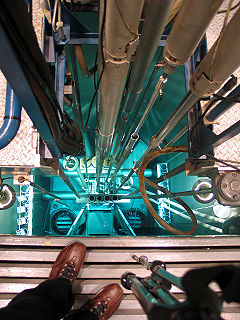 W
WA swimming pool reactor, also called an open pool reactor, is a type of nuclear reactor that has a core immersed in an open pool of usually water.
 W
WRELAP5-3D is a simulation tool that allows users to model the coupled behavior of the reactor coolant system and the core for various operational transients and postulated accidents that might occur in a nuclear reactor. RELAP5-3D can be used for reactor safety analysis, reactor design, simulator training of operators, and as an educational tool by universities. RELAP5-3D was developed at Idaho National Laboratory to address the pressing need for reactor safety analysis and continues to be developed through the United States Department of Energy and the International RELAP5 Users Group (IRUG) with over $3 million invested annually. The code is distributed through INL's Technology Deployment Office and is licensed to numerous universities, governments, and corporations worldwide.
 W
WResearch reactors are nuclear reactors that serve primarily as a neutron source. They are also called non-power reactors, in contrast to power reactors that are used for electricity production, heat generation, or maritime propulsion.
 W
WSeaborg Technologies is a private Danish startup. It is developing small molten salt reactors. Founded in 2015 and based in Copenhagen, Denmark, Seaborg emerged as a small team of physicists, chemists, and engineers with educational roots at the Niels Bohr Institute, CERN, ESS and DTU who share a common vision of safe, sustainable and cheap nuclear power. Seaborg Technologies is named after the American nuclear chemist and Nobel laureate Glenn T. Seaborg.
 W
WThe Shippingport Atomic Power Station was the world's first full-scale atomic electric power plant devoted exclusively to peacetime uses. It was located near the present-day Beaver Valley Nuclear Generating Station on the Ohio River in Beaver County, Pennsylvania, United States, about 25 miles (40 km) from Pittsburgh.
 W
WStartup neutron source is a neutron source used for stable and reliable initiation of nuclear chain reaction in nuclear reactors, when they are loaded with fresh nuclear fuel, whose neutron flux from spontaneous fission is insufficient for a reliable startup, or after prolonged shutdown periods. Neutron sources ensure a constant minimal population of neutrons in the reactor core, sufficient for a smooth startup. Without them, the reactor could suffer fast power excursions during startup from state with too few self-generated neutrons.
 W
WThorium-based nuclear power generation is fueled primarily by the nuclear fission of the isotope uranium-233 produced from the fertile element thorium. A thorium fuel cycle can offer several potential advantages over a uranium fuel cycle — including the much greater abundance of thorium found on Earth, superior physical and nuclear fuel properties, and reduced nuclear waste production. One advantage of thorium fuel is its low weaponization potential; it is difficult to weaponize the uranium-233/232 and plutonium-238 isotopes that are largely consumed in thorium reactors.
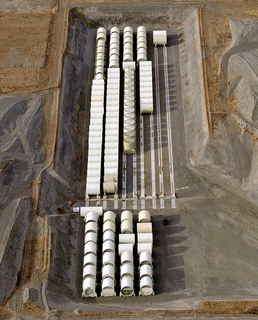 W
WUnited States naval reactors are nuclear reactors used by the United States Navy aboard certain ships to generate the steam used to produce power for propulsion, electric power, catapulting airplanes in aircraft carriers, and a few more minor uses. Such naval nuclear reactors have a complete power plant associated with them. All U.S. Navy submarines and supercarriers built since 1975 are nuclear-powered by such reactors. There are no commissioned conventional (non-nuclear) submarines or aircraft carriers left in the U.S. Navy, since the last conventional carrier, USS Kitty Hawk, was decommissioned in May 2009. The U.S. Navy had nine nuclear-powered cruisers with such reactors also, but they have since been decommissioned. Reactors are designed by a variety of contractors, then developed and tested at one of several government owned and prime contractor-operated facilities: Bettis Atomic Power Laboratory in West Mifflin, Pennsylvania and its associated Naval Reactors Facility in Idaho, and Knolls Atomic Power Laboratory in Niskayuna, New York and its associated Kesselring site in West Milton, New York, all under the management of the office of Naval Reactors. Sometimes there were full-scale nuclear-powered prototype plants built at the Naval Reactors Facility, Kesselring, and Windsor to test the nuclear plants, which were operated for years to train nuclear-qualified sailors.
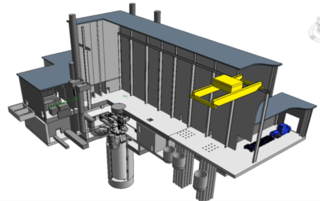 W
WThe Versatile Test Reactor (VTR) is a project currently in development by the U.S. Department of Energy to build a fast-neutron test reactor by 2026.
 W
WThe Zero Power Physics Reactor or ZPPR was a split-table-type critical facility located at the Idaho National Laboratory, Idaho, USA. It was designed for the study of the physics of power breeder systems and was capable of simulating fast reactor core compositions characteristic of 300-500 MWe demonstration plants and 1000 MWe commercial plants.